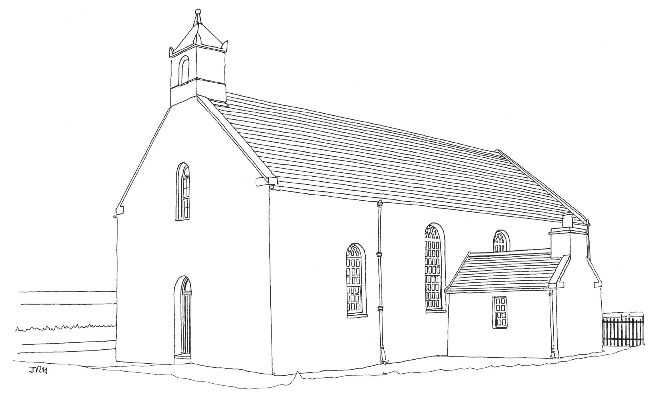An essential part of the fabric
John R Hume reflects on the history and place of a church in Orkney.
John R Hume
READERS of Life and Work may remember a letter in the February 2019 issue by Mr A W Sutherland, referring to this church, and his joy in securing preachers for it in the summer of 2018. This reminded me of visits to this church over a number of years.
Between the mainlands of Orkney and Scotland is the second largest of the Orkneys, Hoy, much of it barren moorland. At its extreme south east is the fertile island of South Walls, linked to it by a sandbank known as The Ayre. During the Second World War, a road was built over the Ayre, replacing a ferry across a deep bay, (really a sea-loch), in two parts, Longhope and North Bay. In the days of sail this was a ‘harbour of refuge’ in westerly gales. Flanking its entrance are two Napoleonic War Martello towers, at Crockness on the north and at Hackness on the south where there is also a battery of cannon to defend the bay. The Hackness defences are now in the care of Historic Environment Scotland.
This background may suggest that this little church is in the ‘back of beyond’ but like all of Orkney the reverse is true: when you are there you realise that you are really in the centre of a sea-based civilisation. To the north is Scapa Flow, a Royal Naval Base in both World Wars, with the islands of Flotta, Fara, and Cava – their names a reminder that until the 15th century the Orkneys were part of the Kingdom of Norway. To the south is the Pentland Firth, where the Atlantic, in a welter of currents, meets the North Sea, with views of Caithness, on the Scots mainland, and the nowabandoned island of Stroma. At the eastern extremity of South Walls is Cantick Head, with its ‘lighthoose’, Facing South Walls on Hoy is the Longhope Lifeboat Station; In 1969 the boat on this station capsized in a heavy sea with the loss of all the eight men on board; the vessel was salvaged, and is now in the Scottish Maritime Museum in Irvine.
The mediaeval parish church on South Walls appears to have been at Osmondwall, at the head of Kirkhope, a bay on the east side of the island. It was dedicated to St Columba, and has been described as a ‘commune kirk of Kirkwall Cathedral’. In the 16th century the parishes of Walls and Flotta were united, but this union was severed in 1882. In 1958 the South Walls charge was linked with Hoy and Graemsay, and the Flotta and Fara charge was added to this linkage.
The village of Longhope, on the north shore of South Walls, was laid out in 1800. The little church which is the subject of this article was built in 1832, a typical small country parish church, with a central pulpit and a horse-shoe gallery. Like many small churches it is particularly interesting as an essential part of the fabric of its place, in its own way lovely and worthy of love. It is close to a stretch of sea where so much has happened, and this can remind us of the Sea of Galilee, the place of so much of Christ’s ministry. Here in Longhope (perhaps a significant name) people have encountered friends, been baptised, married and had their funerals, have read the Word of God and heard it preached, have prayed, sung, come together in Holy Communion, and have touched the hem of the garment of the risen Lord. Here we are in a very real sense in touch with both the material and the spiritual, in communion with God, Father, Son and Holy Spirit. In short, this building really, really matters.
